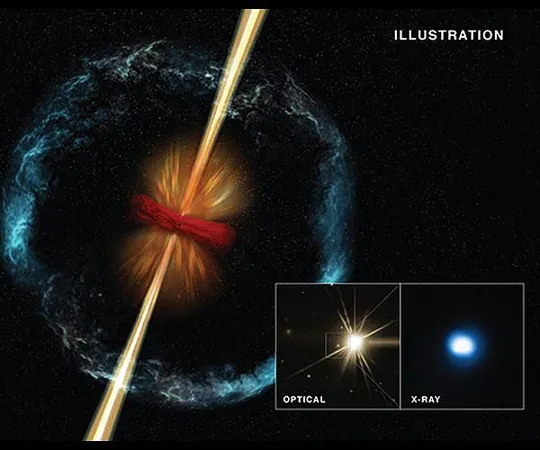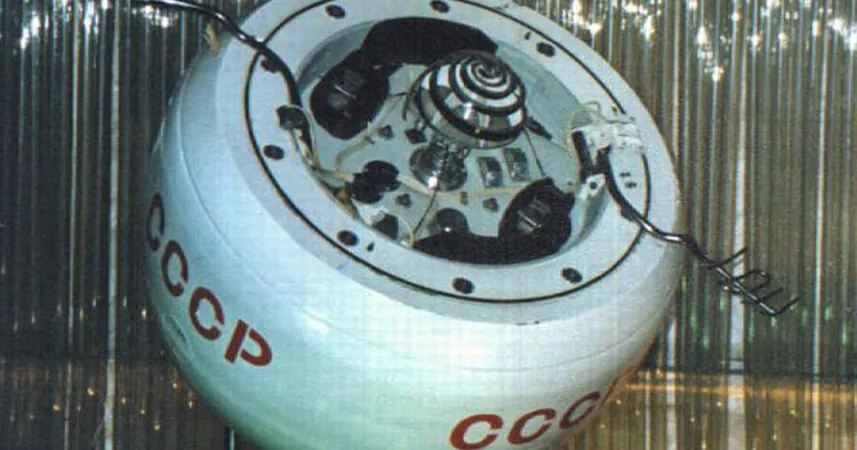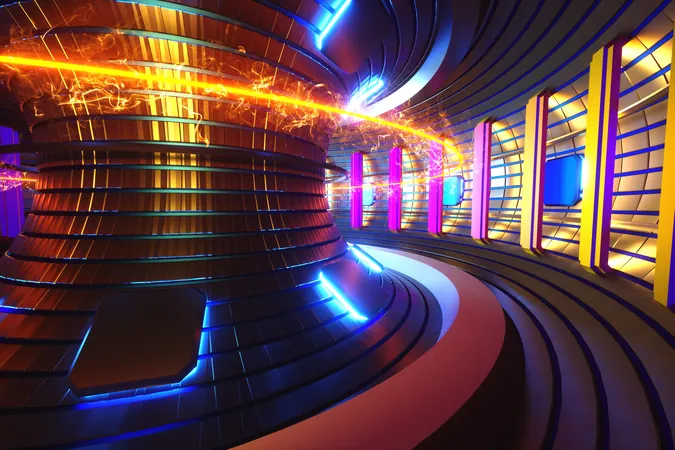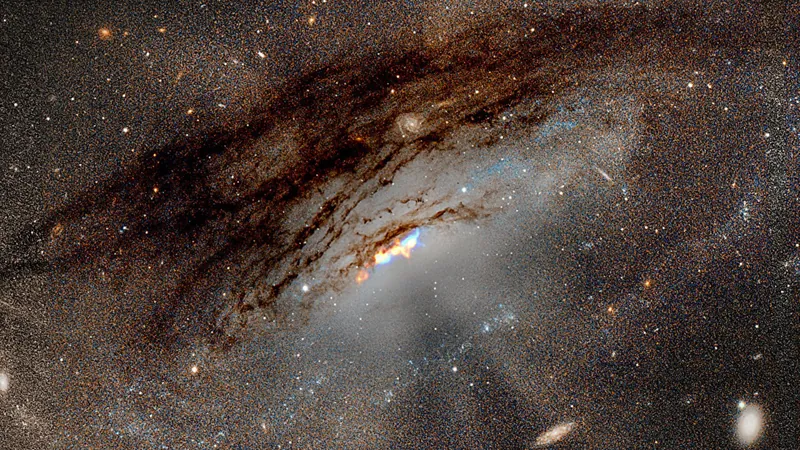
Revolutionary Discovery: Magnetars May Be Behind Unraveling the Mystery of Gamma-Ray Bursts!
2025-04-16
Author: Sophie
Unlocking the Secrets of the Universe's Most Powerful Explosions
Gamma-ray bursts (GRBs) are the most intense explosions since the Big Bang, but their origins have remained shrouded in mystery. Scientists have long debated the mechanisms driving these powerful cosmic events and what celestial bodies serve as their engines. While black holes and neutron stars were the primary contenders, new evidence suggests that millisecond magnetars might be the key players.
The Magnetar Revolution: Evidence from Recent Breakthroughs
Recent findings from cutting-edge astronomical missions, LEIA and GECAM, suggest that these highly magnetized neutron stars could indeed be at the heart of GRBs. These observations, which captured an extraordinary GRB named 230307A on March 7, 2023, provide compelling support for the magnetar model. Researchers propose that this GRB originated from the merger of two neutron stars, releasing a massive amount of energy.
Astounding Instrumentation: How We Discovered the Truth
LEIA and GECAM, both spearheaded by the Chinese Academy of Sciences, observed this event across varying energy wavebands. LEIA focused on soft X-rays, whereas GECAM monitored hard X-rays and gamma rays, revealing a comprehensive picture of GRB 230307A. Their collaboration showcased the features of the prompt emission, consistent with a binary star merger and bolstered by a subsequent kilonova.
A Dramatic Turn: The Magnetar's Role Revealed
After the burst's gamma-ray emission faded, researchers noted an unusual X-ray "plateau" that persisted much longer, indicating a different emission source. This led them to conclude that the magnetar's rapidly spinning magnetic field powered the subsequent X-rays, suggesting it acted as the burst's central engine. Dr. SUN Hui, a leading expert in the field, emphasized that the violent stellar merger likely left behind a magnetar, shooting jets of high-energy gamma rays into space.
Game-Changing Discoveries Await!
These revelations challenge our understanding of GRBs and open doors to fresh investigations into other cosmic events. Prof. ZHANG Binbin of Nanjing University remarked that the mystery of gamma-ray bursts remains rife within the soft X-ray domain, a frontier that future missions can exploit.
The Future is Bright: Collaborations Propel Discovery
The joint efforts of multiple institutions highlight an unprecedented era in astrophysics. LEIA's innovative technology promises to push the boundaries of X-ray astronomy, allowing scientists to understand the birth and evolution of these elusive magnetars. GECAM's swift detection and alert system enhanced global collaboration in observing GRB 230307A.
In Conclusion: A New Era of Cosmic Exploration?
With the groundbreaking evidence supporting the magnetar model as a central engine for GRBs, the field of astrophysics stands at a pivotal moment. These discoveries not only deepen our understanding of the universe's most intense phenomena but also invigorate the quest to disentangle the complex nature of neutron stars and their explosive outcomes. Stay tuned—more cosmic mysteries are waiting to be revealed!









 Brasil (PT)
Brasil (PT)
 Canada (EN)
Canada (EN)
 Chile (ES)
Chile (ES)
 Česko (CS)
Česko (CS)
 대한민국 (KO)
대한민국 (KO)
 España (ES)
España (ES)
 France (FR)
France (FR)
 Hong Kong (EN)
Hong Kong (EN)
 Italia (IT)
Italia (IT)
 日本 (JA)
日本 (JA)
 Magyarország (HU)
Magyarország (HU)
 Norge (NO)
Norge (NO)
 Polska (PL)
Polska (PL)
 Schweiz (DE)
Schweiz (DE)
 Singapore (EN)
Singapore (EN)
 Sverige (SV)
Sverige (SV)
 Suomi (FI)
Suomi (FI)
 Türkiye (TR)
Türkiye (TR)
 الإمارات العربية المتحدة (AR)
الإمارات العربية المتحدة (AR)